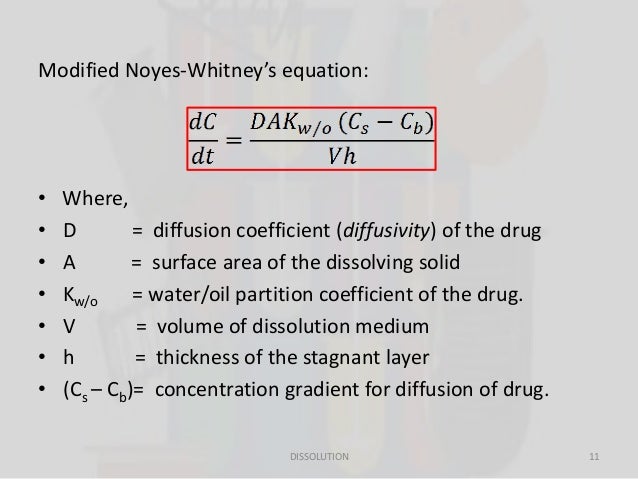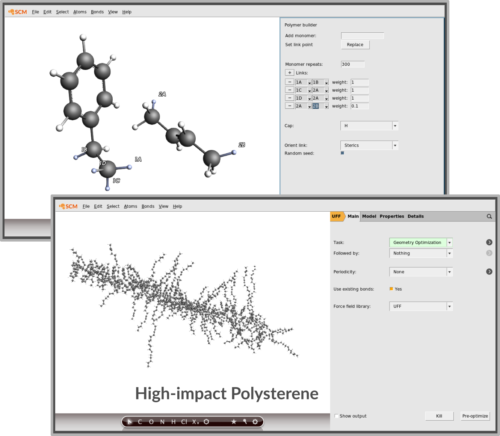Dissolution Calculation Software Free Download


Disso.NET 4 Overview. The highlights of the dissolution software. The ERWEKA Disso.NET 4 is the perfect 21 CFR Part 11 compliant companion to all our Dissolution Systems, ranging from Dissolution Offline over Online to On-/Offline Systems up to the fully automated RoboDis II system. We thank all people who contributed their software! If you do not have Java, have a look at typical output and install it or use Non-Java Interface. 1-octanol/water calculation: ALOGPs was developed with 12908 molecules from the PHYSPROP database using 75 E-state indicies. 64 neural networks were trained using 50% of molecules selected.
Download one of NCH Software's many free software programs in the audio, video, business, graphics, computer utility and dictation space for Windows or Mac. Calculation Wizards. The Calculation Wizards now give you greater control over system setup. PH, CO2, fixed ions, gases, solids and redox can all be set from one tool. For more information related to the Gibbs Phase Matrix, see our tutorials. Calculator freeware with many useful functions. Moffsoft FreeCalc is the ideal replacement for your standard Windows calculator - with adjustable size, visible memory value and digit groupings, this free calculator software is a simple and intuitive tool.
aqion is a free hydrochemistry software that
- validates aqueous solutions: charge balance, EC, …
- calculates pH (acid-base reactions, addition of chemicals) — Online Demo
- calculates the calcite-carbonate system (closed/open CO2 system, LSI)
- calculates alkalinity, buffer capacities (ANC, BNC), and water hardness
- calculates equilibria with mineral phases (dissolution, precipitation, SI)
- calculates and plots titration curves
- calculates redox reactions
aqion uses the well-known U.S.G.S. software PhreeqC as an internal numerical solver.
aqion is free for private users, education and companies. In addition there is the affordable software aqion PRO as an extended version. Both programs run on Windows.
(released Oct 24, 2020)
The Matrix Diffusion Toolkit, developed for the Department of Defense ESTCP program, is an easy-to-use, comprehensive, free software tool that can assist site personnel to effectively and efficiently estimate what effects matrix diffusion will have at their site, and transfer the results to stakeholders. The Toolkit provides the following tools to calculate and evaluate matrix diffusion effects:
1) Square Root Model
A module to provide planning-level estimates of the mass discharge (in units of grams per day) caused by release from a low-k diffusion-dominated unit (typically silt or clay) into a high permeability advection-dominated unit (typically sand or gravel). Estimates of concentration and mass remaining in the high permeability unit, after the source is removed, are also provided.
2) Dandy-Sale Model
A module allowing users to perform: 1) contaminant transport via advection and transverse diffusion in the transmissive layer, and 2) transport via transverse diffusion in the low-k zone. The module provides planning-level estimates of:
Low-k Zone:

- Aqueous, sorbed, and total concentration; and
- Aqueous, sorbed, and total mass.
Transmissive Zone:
- Aqueous, sorbed, and total concentration;
- Aqueous, sorbed, and total mass; and
- Mass discharge.
3) Matrix Diffusion Related Tools
An additional feature that provides a review of theory and methods related to matrix diffusion:
- NAPL Dissolution Calculator: a module that estimates the transverse diffusion of contaminants into the groundwater passing over the top of a Non-aqueous Phase Liquid (NAPL) pool and the transverse diffusion of contaminants into the low-k unit underlying the pool;
- Plume Magnitude Information: a summary of the Plume Magnitude Classification System (Newell et al., 2011) and its application to site investigation and remediation;
- Low-k Zone Remediation Alternatives: a summary of current alternatives for the remediation of low-k zones; and
- 14-Compartment Model: a discussion on the quantitative application of the 14 Compartment Model (Sale et al., 2008a).
Additionally, the Square Root Model also utilizes a Monte Carlo-type approach to analyze uncertainty in the actual concentration, porosity, apparent tortuosity factor exponent, and retardation factor measurements. With this tool, groundwater practitioners can estimate the accuracy of the hydrologic measurements that are being used for the matrix diffusion calculation.
Features
Formula For Dissolution Calculation
The Matrix Diffusion Toolkit provides a valuable tool for developing site conceptual models, supporting site characterization efforts, planning remedial designs, and determining if matrix diffusion will affect remediation goals for groundwater sites. The software can assist site personnel in updating or creating a more accurate conceptual site model, which will enable them to determine if matrix diffusion processes are significant enough to cause “rebounding” of downgradient plume concentrations above remediation goals after plume remediation or isolation is complete. Having this information available before a remedy is implemented could assist site stakeholders in selecting more appropriate remedies and effectively and efficiently addressing the potential issues of matrix diffusion with regulators. Furthermore, addressing extended remediation time frames caused by matrix diffusion would lead to savings in project costs.

Technical Support
Limited technical support is available from Shahla K.Farhat.
System Requirements
The Matrix Diffusion Toolkit requires a computer capable of running Microsoft® Excel (2007/2010) for Windows 7.
Operation requires an IBM-compatible PC equipped with a Pentium or later processor running at a minimum of 450 MHz. A minimum of 256 MB of system memory (RAM) is strongly recommended. Computers not meeting these recommendations will experience slow running times and/or problems with memory.
software, free download Games
Downloads
Matrix Diffusion Toolkit version 1.23 (Excel 2007/2010).
Changes in version 1.1: Some of the apparent tortuosity factor exponents have been updated and clarified.
Tamilanda mp3 songs download. Changes in version 1.2: The concentration units displayed for the low-k zone aqueous and transmissive zone concentration graphs in the Dandy-Sale module have been corrected.
Changes in version 1.21: An error in the Monte Carlo analysis has been corrected (all concentrations were erroneously being multiplied by 5).
Changes in version 1.22: An error in the DSM loading concentration units has been corrected (all concentrations were erroneously being treated as mg/L).

Unzip all the files to the same folder. The zipped file contains the Matrix Diffusion Toolkit spreadsheet, associated pdf files, the Help file, and the User’s Manual.
Click here to download the Matrix Diffussion Toolkit User's Manual.